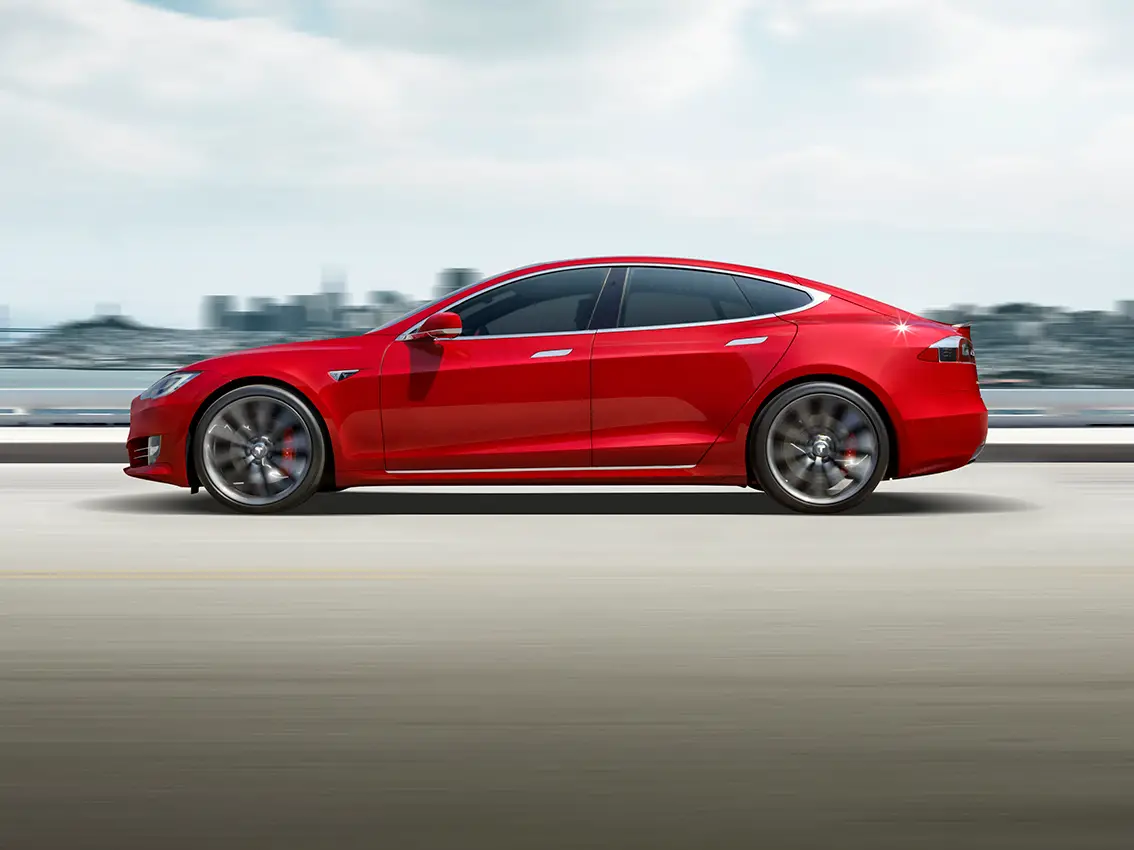The Tesla Model S Long Range Plus is now the first electric car with a 400-mile range. Four hundred miles is getting into what a normal car can do on a tank of fuel, and helps smash an important psychological barrier to electric car adoption.
I’ve driven a lot of electric vehicles (EV). I’ve reviewed just about everything Tesla makes, and I’ve never had any particular worries about “Range Anxiety” — that nagging feeling that EV owners supposedly have where they fret about just how far they can go before running out of electricity.
But it’s something I constantly hear from potential EV buyers before they buy an EV, so it’s a real obstacle to EV adoption. No matter how much EV-proponents bang on about how 99-point-whatever percent of people drive under 20 miles every day, folks will still say “but what if I want to drive to Grandma’s house that’s hundreds of miles away?”
Tesla Model S now first ever electric vehicle to receive EPA range rating above 400 miles! https://t.co/EOTwVfvHS5
— Elon Musk (@elonmusk) June 15, 2020
There are two main ways to deal with this. One is an extensive high-speed charging network, to allow EV drivers to stop, stretch their legs and grab a Diet Coke while their car refuels itself — Tesla has done a bang-up job of this with its extensive Supercharger network, while other companies like Electrify America are doing a decent job playing catchup. The other is to build cars with longer and longer electric range, so they don’t have to charge up in the first place.
That’s what the 400-mile Tesla is all about, and it’s been a bit of an adventure to get here. The first Tesla Model S could go an EPA-estimated 265-miles on a charge in 2012, which was still pretty good. That exceeds the (much cheaper) Chevy Bolt’s 237 miles when it debuted in 2016, and Tesla has continued to extend the range of its cars thanks to more advanced battery tech, larger battery packs, and a few other nips and tucks like more aerodynamic wheels, tires with less rolling resistance, and more advanced motors.
The trek to an EPA-estimated 400-mile range has been a little confusing, though. During Tesla’s quarterly earnings call at the beginning of May, Tesla CEO Elon Musk noted that the top range of the Model S was 391 miles — but claimed that EPA estimate was wrong.
“Actually… the real Model S range is 400 miles. But when we did the last EPA test, unfortunately, EPA had left the car door opened and the keys in the car — this is overnight. And so the car actually went into waiting-for-driver mode and lost 2% of its range. As a result, it had a 391 test,” he explained.
The Tesla Model S is the largest of the company’s sedans.Photo courtesy of Tesla
The EPA denied this claim, saying that it tested the vehicle properly and noting that it was happy to discuss technical issues with Tesla privately as it does with all automakers.
Well, it seems that Elon was right. Tesla announced in a blog post this week that the top-range Model S has an “official EPA-estimated range of 402 miles.” Sure, that 11 mile-increase in range won’t actually affect anyone who buys the thing — it has the same range regardless of what the EPA says, of course — but triumphing over that oh-so-important psychological barrier of 400-miles makes a difference. Probably.
It’s also worth noting that few EVs even breaks the 300-mile barrier. The closest contenders (according to the EPA) are:
- 203 miles – 2020 Porsche Taycan 4S Performance Battery Plus
- 204 miles – 2020 Audi E-tron
- 218 miles – 2021 Audi E-Tron Sportback
- 226 miles – 2020 Nissan Leaf Plus
- 234 miles – 2020 Jaguar I-Pace
- 243 miles – 2020 Kia Soul Electric
- 258 miles – 2020 Hyundai Kona Electric
- 259 miles – 2020 Chevrolet Bolt EV
- 328 miles – 2020 Tesla Model X
- 330 miles – 2020 Tesla Model 3
- 373 miles – 2020 Tesla Model S
The 2021 Ford Mustang Mach-E is slated to have 300 miles of range as “a target” according to Ford.com.








